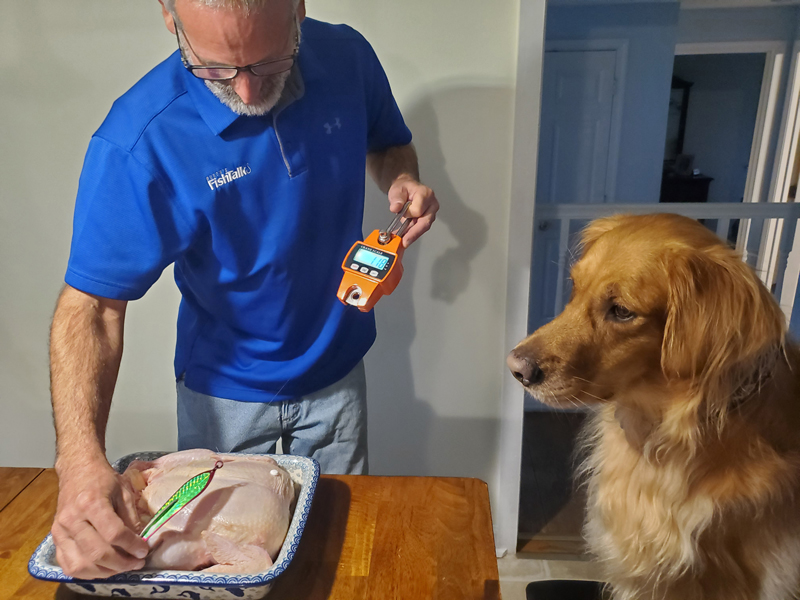If the bite suddenly shut down as another angler arrived, they might get blamed for spooking the fish. But, perhaps a change of tide was the real issue? The barometric pressure suddenly spiked? Or, maybe the fish just got full? Who can really say for sure? Yet we surmise, suspect, and speculate on a regular basis. Since the fish refuse to tell us exactly what’s going on at any given time, making best guesses is and always will be a big part of fishing. Same goes when it comes to our gear, though in many cases the problem is even worse because the truth gets clouded by things like marketing hype or influencers who might be more interested in likes than leveling with you. That’s why we’ve put assertion and innuendo to the test with scientificalish articles like Fishing Line Stretch Test: Stretching the Truth (examining the truth behind braid and monofilament line stretch), and Monofilament Versus Braid ( with a section testing abrasion resistance in different line materials). One thing we’ve never examined, however, is the simple, unassuming fish hook. We’re always hearing that we should sharpen hooks or use fresh ones, but just how much more pressure does it take for a rusty hook to penetrate a fish’s maw as compared to one that’s been fresh and sharp? What role does hook size and thickness play in this equation?

At this point, you may well be wondering just what this has to do with an uncooked chicken. This winter as I was popping some poultry into the oven for dinner, I realized that the skin of the chicken had quite a similar consistency and strength as the membrane between the jawbones of a fish. I darted back to my office, grabbed a half-ounce G-EYE, and started poking. It struck me that the chicken skin could serve as a test platform for hook penetration, so I perforated the luckless bird all over its body in search of the most striper-like section of skin.
My wife later mentioned that she thought it was one of the most tender chickens I’d ever baked.
Hatching an Experiment
With a fresh uncooked chicken in the fridge the next day, I lined up an assortment of hooks in old and poor shape (some were rustier than others), and hooks that were brand new and as sharp as they get. The lineup included a pair of Drone spoons with 10/0 hooks, 8/0 Gamakatsu Octopus hooks, 7/0 Owner Stinger hooks, 5/0 Mustad circle hooks, and 3/0 Eagle Claw Kahle hooks.
Next, I tied a section of monofilament to the end of a RoMech digital hand scale, which reads to the nearest 0.02 of a pound and has a rated accuracy to one percent. Then one after the next I tied each hook onto the line, placed the end of the hook where the skin seemed toughest (where the thigh and breast skin met, though the circle hooks had to be placed in the crook of the thigh or they wouldn’t grab), and pulled on the scale until the hook penetrated beyond the barb. The process was repeated three times per hook, and the results were recorded and then averaged together. Here’s what we discovered with our finger-prickin’ good chicken:
|
Hook Type |
Sharp Pounds Per Penetration |
Rusty Pounds Per Penetration |
|
10/0 Spoon |
1.18 |
2.06 |
|
8/0 Octopus |
0.40 |
0.45 |
|
7/0 Stinger |
1.58 |
1.72 |
|
5/0 Circle |
0.74 |
1.36 |
|
3/0 Kahle |
0.64 |
0.70 |
As you can see, across the board the sharp hooks required less force to penetrate the skin beyond the barb. Particularly in the case of the largest, thickest hook, the difference was quite significant — almost half.
Okay, so we’ve proved that we should all be using sharp hooks. Suspicions confirmed. What was more interesting, however, was the difference hook thickness made. Although the Stinger was a smaller size than the spoon hook, the hook itself is actually thicker than any of the others. Reorder the list by thickness rather than gap size, and it’s clear that the required force for penetration drops hand in hand with hook thickness. But there is one outlier: that Octopus hook. It was the third-thickest in the lineup, yet even the rusty version required less oomph to penetrate the poultry than any of these other hooks. Is it a matter of the hook shape? Gamakatsu’s high-carbon tempered steel with a conical point? Gamakatsu claims their hooks hold the point longer because of the materials they use and their oil-cooled tempering process, but quoting them leads us once again into the world of potential marketing hype. So we’re not going to try to nail down a reason. Whatever it may be, however, we can say one thing for sure: those Gamakatsu Octopus hooks do have an edge when it comes to ease of penetration. A big edge.

We’ve all seen hooks pop free moments before the fish was in the net, and we’ve all lost fish due to a low-power hook-set made when the bite came as your rod tip was at the top of the sweep. Might you avoid such heartbreak a time or two next season, with better hook penetration? Would it be worth the time and expense to replace or sharpen those old hooks? It certainly wouldn’t hurt. And while we can’t say with certainty whether using only fresh, sharp hooks will boost your catch rate, we do know one more thing for sure: my wife doesn’t like having baked chicken two nights in a row.